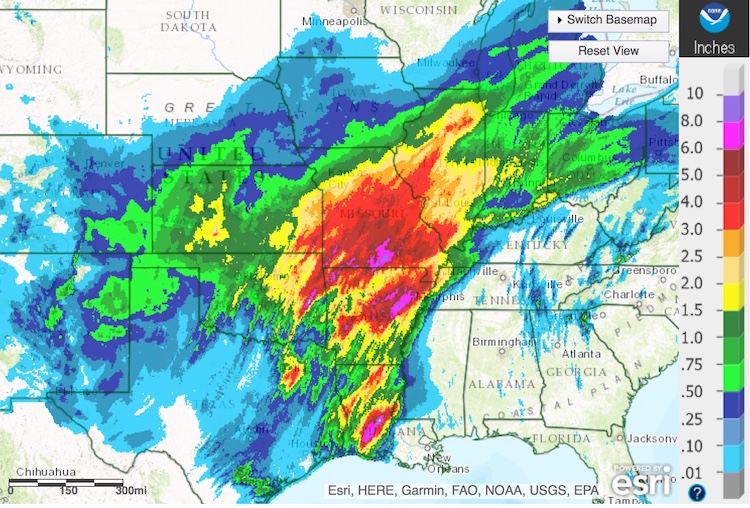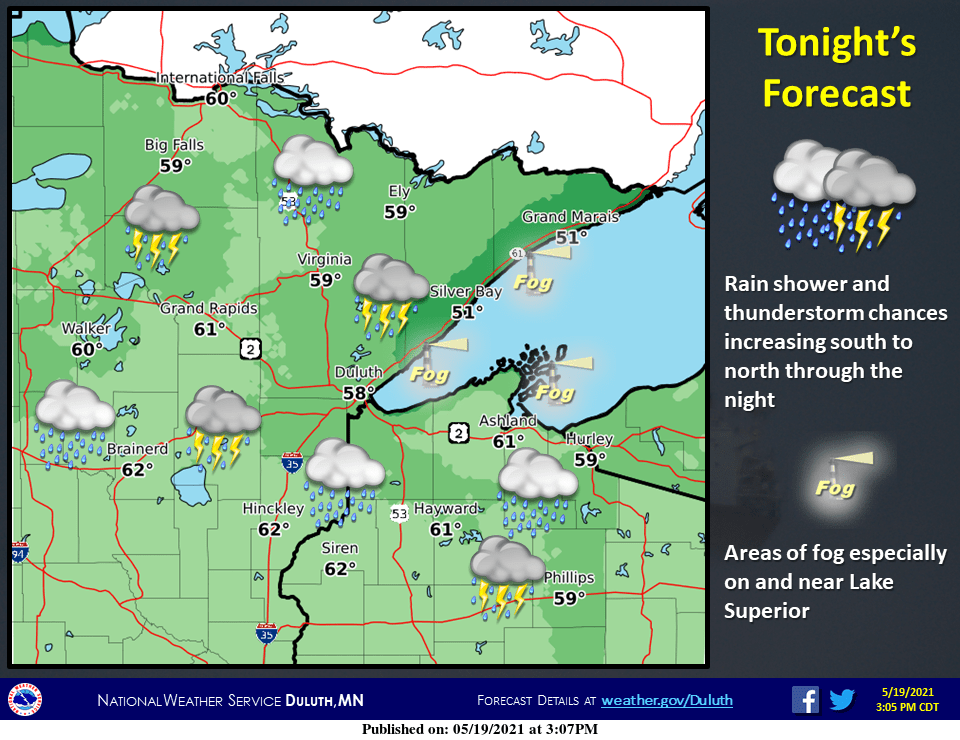
Several strong atmospheric river events from October to December along the West Coast brought ample rainfall and snow to several western states and mountain ranges. Consequently, flash flooding and fatalities resulting from the heavy rain were juxtaposed with the beneficial rainfall received from these events in the drought-stricken locations across the West and Southwest. Tucson reported its wettest July and month on record followed by its wettest August on record. The Southwest monsoon season returned in July following two relatively inactive seasons. Blizzard conditions and heavy snowfall rates disrupted transportation throughout the region. Denver had its fourth-largest snowstorm on record while Cheyenne reported its heaviest multi-day storm on record. A strong winter storm brought heavy snowfall to the central Rockies and High Plains March 13-14. Precipitation was below average across parts of the West, northern Rockies, Plains, western Great Lakes, Mid-Atlantic coast and parts of the Northeast and Florida. throughout 2021.įor the year as a whole, precipitation was above average in pockets from the Gulf Coast to the Great Lakes and into portions of the Northeast. Drought remained extensive across much of the western U.S. average annual precipitation was 30.48 inches, which is 0.54 inches above the long-term average, ranking in the middle third of the historical record.ĭespite near-normal precipitation at the national scale, 2021 witnessed several significant events at the regional scale, including an above-average monsoon season across the Southwest and several atmospheric river events along the Pacific Coast. There were nearly 106,000 daily temperature records tied or broken during 2021. temperature-related energy demand for 2021 was 31 percent of average and the 7th-lowest value in the 127-year period of record.įor the year, warm daily records outpaced cold records by a margin of more than two to one. New Hampshire and Rhode Island ranked warmest on record with minimum temperatures for Utah and Massachussets ranking second warmest on record.īased on NOAA's Residential Energy Demand Temperature Index (REDTI), the contiguous U.S. 
Temperatures were above average across the vast majority of the Lower 48. The nationally averaged minimum temperature (overnight lows) during 2021 was 42.6☏, 2.6☏ above average and ranked sixth warmest in the 127-year record. Maine ranked second warmest for daytime high temperatures with 13 additional states across the West, Great Lakes and Northeast experiencing a top-five year. Near to below average temperatures were present in pockets from the southern Plains to the Southeast. Temperatures were above average across most of the contiguous U.S. The nationally averaged maximum temperature (daytime highs) for 2021 was 66.4☏, 2.4☏ above average, ranking as fifth warmest in the 127-year record. An additional 21 states from the Rockies to the East Coast ranked among their top-five Decembers. was punctuated by record-warm temperatures across 10 states from the central Plains to the Gulf Coast.
A record-warm December across the contiguous U.S. Summer of 2021 tied with 1936 for the warmest summer on record. This is the largest extent of record warm temperatures on record for the U.S. Approximately 14.6 percent of the contiguous U.S. ended with an unprecedented heat wave across the Pacific Northwest. A record-warm June across the contiguous U.S. in more than 30 years and caused power outages for nearly 10 million people as well as other costly impacts across 15 states. It was the coldest event observed across the contiguous U.S. from February 10-19 brought frigid temperatures, snow and ice from the Plains to southern Texas and into the Mississippi River Valley. A cold-air outbreak across the central U.S. Temperatures were near average for the year in pockets across the South and Gulf Coast states. Maine and New Hampshire both had their second-warmest year on record with 19 additional states across the Northeast, Great Lakes, Plains and West experiencing a top-five year. experienced above-average temperatures during 2021. 
The six warmest years on record have all occurred since 2012. was 54.5☏, 2.5☏ above the 20th-century average and ranked as the fourth-warmest year in the 127-year record.

U.S.Based on preliminary analysis, the average annual temperature for the contiguous U.S. Note: "Regional Climate Centers" are joint programs among university, state, and/or Federal Goverment agencies. NOAA locations that provide climatic data & historical data records Press enter or select the go button to submit request







 0 kommentar(er)
0 kommentar(er)
